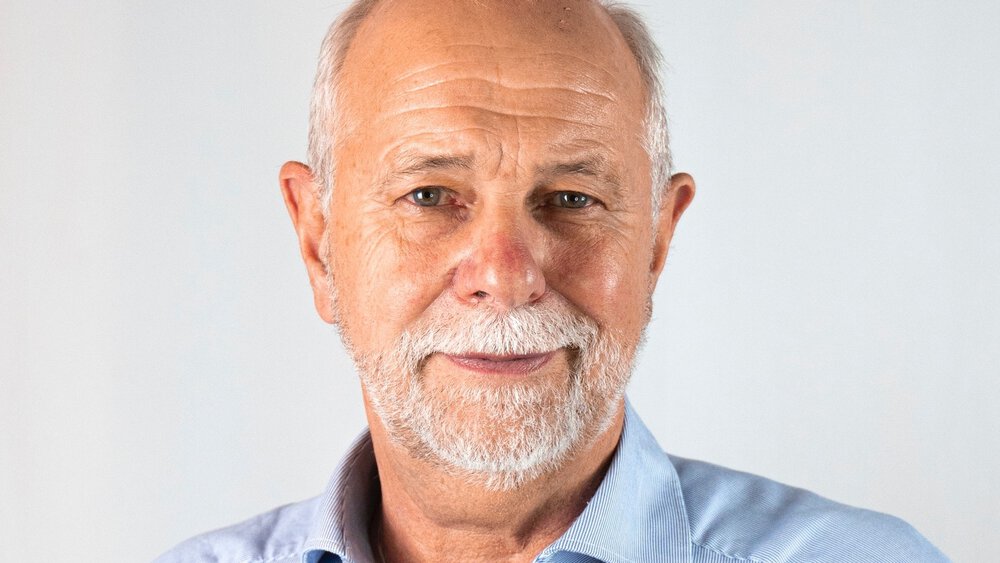“Building a quantum computing industry in Europe”
May 5, 2025
For the third time, the international quantum technology community will come together at the World of Quantum in Munich (June 24 to 27, 2025). The exhibitors include the European Quantum Flagship Initiative and the industry association QUTAC, two heavyweights from research and application. In this interview, QUTAC representative Dr. Reinhard Ploss and Professor Jürgen Mlynek, Chairman of the Strategic Advisory Board of the Flagship Initiative, talk about current trends and developments in this young technology field.
Dr. Ploss, Professor Mlynek, would you please briefly introduce your organizations and your role within them?
Professor Jürgen Mlynek: I am Chairman of the Strategic Advisory Board of the European Quantum Flagship Initiative. The EU’s flagship initiative, which was launched in 2018, has a budget of one billion euros over ten years—and the clear intention of not only researching the basics, but also addressing the interface to commercial application. Our aim is to prepare the ground for a new industrial sector with future-proof jobs. Primarily, we support projects in which consortia from science and the private sector work together. [...]
Dr. Reinhard Ploss: QUTAC was established in 2021 as part of the innovation dialog initiated by German Chancellor Angela Merkel. I am one of the founders and represent the association externally, which includes 14 of the largest companies in Germany and Europe. Our basic idea was that, in addition to hardware and software development for quantum computing, application expertise will also be essential. In pilot projects, QUTAC member companies are testing which issues quantum computing is suitable for, where it will be superior to today’s high-performance computers and how thinking and algorithms need to change in order to fully exploit its potential. [...]
There is a wide variety of approaches to quantum computing. What does the physicist have to say about this flourishing landscape of ideas?
Mlynek: I’m torn. The variety of possibilities for realizing qubits is fascinating: platforms based on semiconductors, superconductors, neutral atoms, ions or photons are in the running. This is exciting from a scientific point of view. At the same time, this diversity shows that there are still no obvious winners. Some approaches—superconductors, ions and neutral atoms—are promising. However, we must always bear in mind that resources are limited. Does it therefore make sense to promote all platforms and include new approaches in the funding? Or should we focus on just two or three platforms and join forces to work towards market maturity? [...] To stay with your image: instead of letting a thousand flowers bloom, we should perhaps plant the two strongest shoots, fertilize them and let them flourish. We need to get out of the labs and into the world of professional engineering, miniaturized designs and reliable manufacturing processes. The world of Reinhard Ploss...
Ploss: ...QUTAC has taken this view from the outset. Of course, a better idea may always come along. But it is about industrialization of the quantum computer and corresponding learning curves: in order to master quantum systems with a high number of logical, functional qubits, a level of precision in production is required that startups would have difficulty achieving. Whoever completes this learning curve most effectively wins the race to market maturity. I therefore agree that we should focus on one or two approaches and start scaling. This will cost a significant amount of money and is no longer a startup issue. US company Nvidia recently founded a Quantum Center and is investing ten-digit sums of money. We have to face up to this competition if we want to build a quantum computing industry in Europe. This also applies to software, as developments in hardware, software and middleware as well as applications in this area run almost synchronously.
How challenging is this synchronicity for industrial users?
Ploss: It is still more about the approach than about specific practical solutions to problems. Our members are investigating how they need to ask different questions in order to make optimum use of the performance of quantum computers. The hardware platform is of secondary importance for the time being. More important is the realization that new approaches are needed for computing with quantum computers. Incidentally, this rethink has led to us achieving better results today with conventional high-performance computers. Nevertheless, one gap remains: there is a lack of players in Europe who integrate the excellent hardware components developed to date into quantum computer systems. [...]
Mlynek: To pick up here: in the US, there are companies with hardware, internet and software backgrounds for whom it is obvious to build their own quantum computers, develop software and use it. They also have the means to take risks. We don’t have these players in Europe. We have no big “system makers”, just “system takers”. There are component manufacturers, but no corresponding manufacturers who could build quantum computers, apart from a few startups. However, their funding rounds are in the double-digit million range, while high triple-digit million amounts of cash flow in the USA. This makes a big difference in the future scaling. To counteract this, we need innovation ecosystems and more venture capital. Because we need to move from room-filling laboratory setups to chip integration as quickly as possible.
Why is it nevertheless so important to investigate the potential impact of quantum computing on today’s business models now?
Ploss: It is becoming clear what quantum computers can achieve, be it in pharmacy, chemistry, finance, logistics, production or transport planning. Wherever complex solutions with many variables are required, they are superior to today’s hardware. That is why our industry must be “quantum-ready” as soon as the technology is available. If we aren’t, others will win the race or we will have to rely on players who gradually acquire our industry expertise in the course of solving problems. This process is already underway in digitalization. Providers of digital platforms are acquiring expertise with which they can penetrate the core business of sectors for which they were previously only IT service providers. Anyone who knows how to use quantum computers at the right time has an advantage.
Professor Mlynek, you have deep insights into research. Are there approaches with disruptive potential?
Mlynek: The quantum computer is disruptive enough in itself. It is the approach in quantum technologies that is triggering a real paradigm shift. We need to move quickly to implementation and pool the limited resources. [...] Politicians must now make funds available for this—also with a view to Europe’s technological sovereignty and security architecture. A coalition of the willing is needed.
Ploss: I absolutely agree with Mr. Mlynek. We need to think more consistently, act in a more focused way and channel resources into engineering. This requires the courage to focus on individual platforms and to stop promoting others. The ambition to make everyone happy is not compatible with the goal of asserting ourselves in global competition.
Are we talking about research factories?
Ploss: Not a research factory, but an implementation industry in which European consortia form and quickly start building quantum computers.
In the form of a public-private partnership?
Mlynek: Neither the industry nor the state can do it alone. If no company is prepared to take the risk, the state cannot fix it. Conversely, we are talking about sums that even large companies cannot simply put at risk. [...]
The third World of Quantum takes place at the end of June. What role does the trade fair play and how do you assess its benefits for the quantum community?
Ploss: This fair helps immensely. It is an important platform where the most important players come together and continue the necessary discussions. Our discussion has shown that we are currently in a phase of opinion-forming in order to align our actions more strategically. The World of Quantum shows that our topic is by no means to be shelved, but that we have made good progress—and want to make further progress.
Mlynek: Exactly. The World of Quantum is a showcase for what we have already achieved in science and in business—and what we can achieve together. We are a highly innovative future field with prospects. If we manage to join forces, we can build a successful European quantum industry. The course must now be set for this. The trade fair comes at the right time. It is a platform for continuing the strategic debate and bringing stakeholders together.
Downloads
240200
Belonging images







- PR Manager
